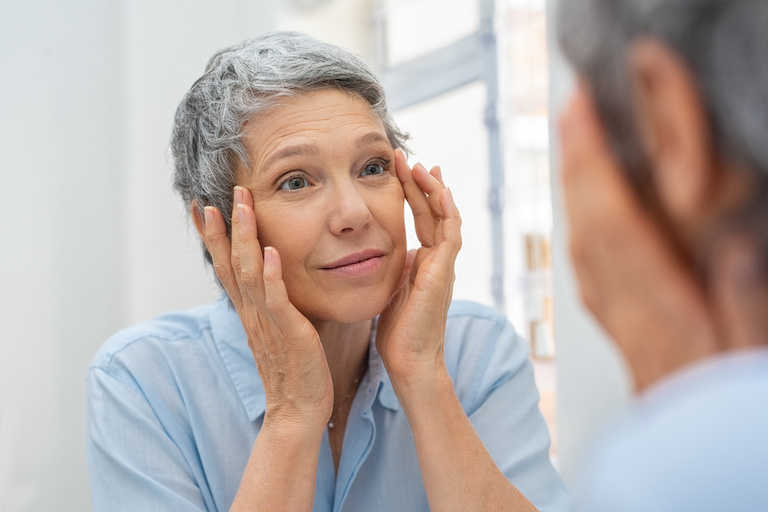Century Park Blog

For many of us, sight is the most important of our five senses. Through our eyes, we see the smiles on our loved ones’ faces, watch a beautiful sunset, tell the time on the face of our watches, look both ways to know when to cross the road and glance at the sidewalk to avoid a dropped piece of chewing gum.
Our eyes reveal emotions, keep us safe and help us experience life more fully.
Unfortunately, as we age, our eyesight tends to decline, and those with once-20/20 vision may need a pair of glasses for reading or may suddenly find objects blurry.
Because we want to live a fun and active lifestyle, even as we age, it is important to take care of our eyes, to know what warning signs to look for and how to correct problems that might arise.
Cataracts
The most common eye disease among the elderly is cataracts, affecting approximately 20 percent of individuals over 60.
Cataracts involve a gradual clouding of the vision, usually in the center of the visual field. Sometimes people with cataracts also slowly lose the ability to see the color blue. This is caused by the eye’s natural lens becoming more opaque over time.
Untreated, cataracts can cause blindness. However, the good news is that cataracts are easily treatable.
Surgeries to remove cataracts are some of the most common performed on the elderly population – they involve replacing the eye’s lens with a new, clear one. Usually, those who undergo the surgery can return home the same day and are back to their normal activities in a matter of days.
Risk factors for cataracts include exposure to ultraviolet light or radiation, as well as diseases like diabetes and high blood pressure.
While there is no absolute way to prevent cataracts, there are steps that we can take to reduce the chance of developing them. Wearing sunglasses outdoors cuts down the amount of UV exposure, and taking steps such as exercising and eating a balanced diet reduces the chance of developing diabetes and, indirectly, cataracts.
Glaucoma
While cataracts are the most prevalent eye disease among the elderly, glaucoma is the most destructive. It accounts for approximately 10 percent of cases of blindness in the United States.
This disease causes individuals to slowly lose their vision due to a slow buildup of pressure within the eye. The pressure deadens the nerves, and while it is not painful, it is irreversible. There is no cure for glaucoma.
Again, treatments do exist. Catching glaucoma and treating it at an early stage are imperative in saving one’s eyesight. Routine visits to the ophthalmologist are the best way to detect glaucoma.
Certain risk factors come into play as well: eye injury, family history of glaucoma, increased age (especially after age 60), African-American ancestry (African-Americans are more than six times as likely to develop glaucoma than Caucasians) and Asian ancestry.
Macular degeneration
Another major eye concern for the elderly is macular degeneration, often referred to as age-related macular degeneration (AMD). This entails a breakdown of the cells of the eye, caused by impaired blood supply to the macula, or center of the inner lining of the eye. This is where the ability to focus is compromised or sections of the visual field (usually in the center) are lost.
Macular degeneration starts out with yellow deposits on the macula, which may be related to high levels of cholesterol.
Beyond this first stage, advanced AMD presents itself in two forms: wet and dry. Dry AMD happens when the blood vessels of the eye shrink, and wet AMD happens when the blood vessels grow too much and rupture. The dry form is most common and less serious than wet AMD, which progresses more quickly and is harder to treat.
Treatment for AMD is best started at the earlier stage and may include taking vitamin supplements, especially with antioxidants, beta-carotene, vitamins C and E and zinc, or it may include injections behind the eye. However, research is ongoing, and the best treatment is prevention.
Researchers have identified several risk factors for AMD: family history of AMD, advanced age (often after age 75), high blood pressure, high cholesterol levels, obesity, a Caucasian background and a high-fat diet. Exercising and eating a healthy diet can help you reduce your risk for AMD.
Your eyes are the prize
Cataracts, glaucoma and macular degeneration are just three of the diseases that can impair the eyesight of the elderly. For each one, the important thing to remember is that early detection and treatment are the key to saving one’s vision and continuing to live an active life.
Take care of your eyes; they are one of the most precious gifts you will ever receive.



